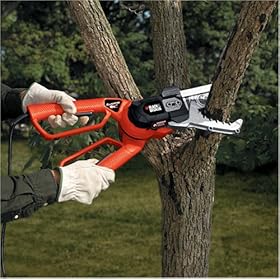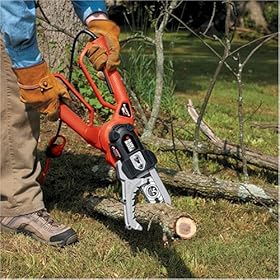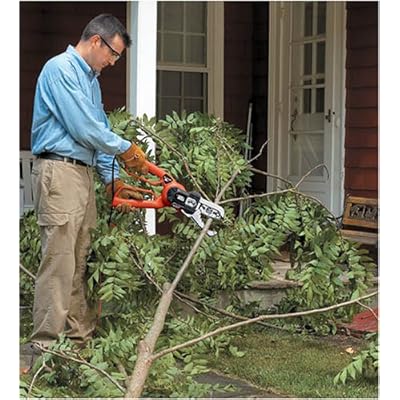Last Minute Celestron Firstscope Telescope Stamina Inmotion E1000 Elliptical Trainer Ideas
Friday, November 25, 2011
Animated-Reaching-Hand.wmv
Wednesday, November 16, 2011
Black & Decker LP1000 Alligator Lopper 4.5 amp Electric Chain Saw
!±8±Black & Decker LP1000 Alligator Lopper 4.5 amp Electric Chain Saw
Brand : Black & DeckerRate :

Price : $69.00
Post Date : Nov 16, 2011 12:14:21
Usually ships in 24 hours
 The Alligator Lopper's wide 4-inch jaw capacity easily chews through small trunks and logs. |
 Because the Alligator Lopper cuts side-to-side instead of up and down, the chain won't bury itself in the ground when the cut is completed -- saving wear and tear on the cutting surface. |
 The Alligator Lopper's controlled, smooth cutting action makes clean-up from storms or simple pruning easy, safe, and fast. |
Black & Decker offers both cordless and electric chain saws, including the Alligator Lopper electric chain saw and 18-volt cordless chain saws. Chain saws feature powerful motors for fast cutting and a sturdy, lightweight design that makes them exceptionally easy to use.
The Alligator Lopper Makes Cutting a Breeze
Take a big bite out of fallen trees, tree limbs and brush with the Alligator Lopper -- a revolutionary cutting tool that provides chainsaw-like cutting performance in an un-intimidating tool. With its scissor-like action, the Alligator Lopper’s rugged metal jaws clamp onto logs, thick branches, tree limbs, and vines -- and then saw right through them. Once limbs and branches are on the ground, the Alligator Lopper is perfect for chopping them up into manageable pieces to throw away or chuck into your fireplace.
This amazing saw boasts a rugged 4.5 amp motor for fast, powerful chomping through wood -- plus a heavy-duty cutting bar and chain to really chew through dense branches and logs. This model also features auto chain tensioning to keep the tool in top cutting form. Just loosen the bar retainer bolts with the included wrench and the bar automatically takes out the slack and adjusts the chain’s tension perfectly.
The Alligator Lopper’s jaws offer the ultimate in controlled cutting. The rugged metal guards that cover the jaws protect you from the cutting chain, and they immediately snap back over the blades once the cut is complete. The Alligator Lopper’s jaws also mean that there's no skipping around at the start of a cut. Unlike traditional chainsaws, the lopper cuts side-to-side instead of from top to bottom. This sideways cutting action prevents the cutting chain from burying itself in the dirt as the chain completes its cut.
The Alligator Lopper also makes it much faster and easier to cut logs, because you'll never need to prop them up on saw horses or on other any other brace. Just grab the logs in the Alligator Lopper’s jaws and cut right through them.
Key Technical Specs:
- Power: 4.5 amps
- Bar length: 6 inches
- Jaw capacity: 4 inches
Applications
The Alligator Lopper is ideal for tree pruning, clearing brush, storm clean-up, cutting firewood and more, and it’s a great alternative to chainsaws, manual loppers, handsaws and clippers.
Warranty
This power yard product from Black & Decker is covered by the manufacturer for two years from the date of purchase. This warranty does not cover damage resulting from negligent handling, misuse or lack of reasonable maintenance and care. (Proof of purchase may be required).
Black & Decker's Focus on Performance
Black & Decker is a global marketer and manufacturer of quality products used in and around the home, and it also serves as a major supplier of information systems and services to government and commercial clients worldwide. With products marketed in over 100 countries, Black & Decker holds leading market shares in a variety of industries, and it frequently adds new product lines to its family of power tools, cleaning tools, outdoor power equipment, laser products and more.
Troll Beads Review !8!# Cheapest Acoustic Guitars Sale 737ng Simulator Discounted
